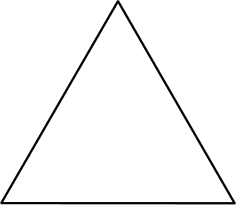30 OCT 2025 by ideonexus
 How the Tarot Works
How the Tarot Works
The Tarot is where the past and the present meet, where pictures and stories come together—that is how it works its magic. We tell stories about our lives constantly—both to other people and ourselves. Just remembering what happened last night or talking about your day involve storytelling. What's more difficult is understanding what is going on below the surface of these stories. One of the most difficult things any of us can do is to get a perspective on our lives from outside of our co...Folksonomies: tarot
Folksonomies: tarot
27 OCT 2025 by ideonexus
 Mindfulness to Avoid Attachment
Mindfulness to Avoid Attachment
...if you meet someone you feel strong desire toward, you can try to remember someone you were extremely attracted to in the past where that attraction turned into something unpleasant or painful. Think about all the problems that came from your excessive feelings of desire and then think that other sentient beings may have gone through a similar experience as a result of their obsession. Imagine you are absorbing all their pain, relieving them of their anguish. Then make the following mental...Folksonomies: buddhism attachment
Folksonomies: buddhism attachment
10 OCT 2025 by ideonexus
 The Scientific Method Produces General Principles by Whic...
The Scientific Method Produces General Principles by Whic...
Just as the first means by which science reduces the danger of error is the continual comparison of ideas and concepts, the second is the formulation of general principles by means of which we can understand cause-and-effect or sequential relationships among events. The function of a general principle or scientific law is twofold; to organize discrete objects and events in systematic order so that we can deal with them more effectively and exercise greater control over them; and to provide a ...10 OCT 2025 by ideonexus
 Observation Provides Data on Problems, but Cannot Solve Them
Observation Provides Data on Problems, but Cannot Solve Them
A good illustration of the scientific method, in which observations are made for the purpose of identifying difficulties and analyzing situations, is the procedure followed by a physician when he makes a diagnosis. A doctor does not write a prescription solely on the basis of what his patient tells him; he uses instruments to take the patient’s temperature to examine his feces, and to analyze his urine. It is only after he has made these examinations that he writes his prescription; without...01 OCT 2025 by ideonexus
 Rabbit-Holing Responsible for Some Divorces
Rabbit-Holing Responsible for Some Divorces
“We really expect our romantic partners to have this shared reality — a similar view or understanding of the world to ours,” Van Duyn said. “It is much more important in romantic relationships than in other types of relationships because we are more dependent and interwoven in our day-to-day lives with our partners. Scholars have found that this shared sense of reality is really important for the success and happiness of romantic partnerships because it fosters closeness.”
Partners...14 JUL 2025 by ideonexus
 Releasing the Cramp in the Mind
Releasing the Cramp in the Mind
One method of muscular relaxation is to begin by increasing tension in the muscles so as to have a clear feeling of what not to do.15 In this sense there is some point in using the initial koan as a means of intensifying the mind's absurd effort to grasp itself. But to identify satori with the consequent feeling of relief, with the sense of relaxation, is quite misleading, for the satori is the letting go and not the feeling of it. The conscious aspect of the Zen life is not, therefore, sator...Folksonomies: zen
Folksonomies: zen
14 JUL 2025 by ideonexus
 Grasping for Nirvana is Grasping
Grasping for Nirvana is Grasping
"If my grasping of life involves me in a vicious circle, how am I to learn not to grasp? How can I try to let go when trying is precisely not letting go?" Stated in another way, to try not to grasp is the same thing as to grasp, since its motivation is the same-my urgent desire to save myself from a difficulty. I cannot get rid of this desire, since it is one and the same desire as the desire to get rid of it! This is the familiar, everyday problem of the psychological "doublebind," of creati...Folksonomies: zen
Folksonomies: zen
08 DEC 2024 by ideonexus
 How Steroids Produce Rage in Users
How Steroids Produce Rage in Users
I pride myself on never losing my cool I've never screamed at anyone I've never gotten physical with anyone but the ideas in my head that tell me to do things tell me to do unspeakable things like what they're unspeakable I'd have to speak them you really want to know Mum I'm also [ __ ] weird so just remember that no we bit most people uhprobably don't have this severity but I'll read a comment on social media directed at me I guess about me um and it's from like you know nameless faceless ...07 DEC 2024 by ideonexus
 Prosochē - Stoic Version of Mindfulness
Prosochē - Stoic Version of Mindfulness
Prosochē (προσοχή) [pro-soh-KHAY]—the attitude and practice of attention—is the fundamental Stoic spiritual attitude.1 It is a state of continuous, vigilant, and unrelenting attentiveness to oneself—the present impressions, present desires, and present actions which shape one's moral character (prohairesis).2
When you relax your attention for a while, do not fancy you will recover it whenever you please; but remember this, that because of your fault of today your affairs must ...Folksonomies: mindfulness stoicism
Folksonomies: mindfulness stoicism
01 DEC 2024 by ideonexus
 Cultural Achievement Undermines Contemplative Attention
Cultural Achievement Undermines Contemplative Attention
Excessive positivity also expresses itself as an excess of stimuli, information, and impulses. It radically changes the structure and economy of attention. Perception becomes fragmented and scattered. Moreover, the mounting burden of work makes it necessary to adopt particular dispositions toward time and attention [Zeitund Aufmerksamkeitstechnik]; this in turn affects the structure of attention and cognition. The attitude toward time and environment known as “multitasking” does not repre...Folksonomies: critical theory
Folksonomies: critical theory




